I belong to a group of travel buddies who love to go on pilgrimage trips together in order to get the best deal. Unlike traditional pilgrimages, our trips go beyond just visiting churches. We make sure we include cultural visits, tourist sites, UNESCO sites and of course, shopping. We set out to take on the "Camino de Santiago" or "The Way of Saint James," a large network of ancient pilgrim routes stretching across Europe and coming together at the tomb of Saint James in Santiago De Compostela in Spain. There are a few ways to do this, including the traditional walk from France, horseback, or taking a bus. We opted to take the bus due to some seniors in the tour group; however, some of us walked a little bit toward the end of the journey.
As always when we travel, we try to sneak in quick side trips close to one of the major airports in Europe for easier access. In addition to our pilgrimage, we flew into CDG (Paris) and hired a driver who took us to Le Mont-Saint-Michel in Normandy. Le Mont-Saint-Michel is a magical island topped by a gravity-defying medieval monastery. It is one of France's most stunning, jaw-dropping sights. Set in the mesmerizing bay where Normandy and Brittany merge, the island draws the eye from great distances. The staggering location has long inspired awe and the imagination.
From Paris we flew to Toulouse, France, where our pilgrimage journey began. We made our way to Lourdes, a town in southwestern France at the foothills of the Pyrenees mountains. Lourdes is known for the Sanctuaires Notre-Dame de Lourdes, a major Catholic pilgrimage site visited by millions each year. The pilgrims gather at the Grotto of Massabielle (Grotto of the Apparitions), where in 1858, the Virgin Mary is said to have appeared to a local woman known as St. Bernadette. In the grotto is a spring which is considered to be conjured from a miracle during the appearance of the Virgin Mary. Here pilgrims can drink or bathe in this water, fulfilling their pilgrimage in the process
Our next stop was the familiar and famous tourist city of Barcelona, Spain, to revisit the Gothic district and the famous street, Las Ramblas. We continued to the Plaza Catalunya and Passeig de Gracia to admire the fascinating eccentricity of the architectural masterpieces of Antoni Gaudi in the Batllo and Mila houses. A stop in Barcelona is not complete without going up to Montserrat, a multi-peaked rocky range located about an hour outside of Barcelona. It is part of the Catalan Pre-Coastal Range. The main peaks are Sant Jeroni, Montgrós and Miranda de les Agulles. The mountains are also known to be a special, mystical place for the local Catalan people. It's home to the statue of the Virgin Mary of Montserrat, who's known to perform numerous miracles, attracting millions of pilgrims from all over the world.
Along the way throughout the week we made numerous stops to the following wonderful places:
Poblet Monastery, a Cistercian abbey in Catalonia, one of the largest in Spain. At its center is a 12th-century church. The austere, majestic monastery, which has a fortified royal residence and contains the pantheon of the kings of Catalonia and Aragon, is an impressive sight.
Zaragoza, a historical and beautiful city of Spain's Aragon region, and also its capital. Overlooking the Ebro River in the city center is baroque Nuestra Señora del Pilar Basilica, a famous pilgrimage site with a shrine to the Virgin Mary and multiple domes. Mudéjar-style landmarks, combining Islamic and Gothic architecture, include the Aljafería, an 11th-century Moorish palace, and the Cathedral of the Savior, which began its construction in the 12th century.
Pamplona, an exciting and playful city, and the capital of Navarra, Pamplona is the most noteworthy city of the area. It hosts one of the world's biggest parties, the festival of San Fermín, where the exhilarating "Running of the Bulls" takes place. According to locals, there is a constant, steady flow of visitors throughout the year, many of whom are pilgrims or hikers doing the Camino de Santiago. This is where we had the craziest fun time reenacting "Running of the Bulls."
Onati, a charming Basque city was next. We visited the University of Holy Spirit (the first university of Basque Country), Saint Michael's Church, Monastery of Bidaurreta and the Arantzazu Sanctuary.
Then onto Loyola, the birthplace of St. Ignatius of Loyola, founder of the Jesuits. Here lies the 17th-century basilica dedicated to St. Ignatius, whose family home is behind the sanctuary.
Bilbao houses the iconic Guggenheim Museum, the Euksalduna Palace; the Plaza Ensanche and the Sagrado Corazon Church. It is a must for architecture and culture lovers.
We took some steep and twisty roads up the mountains to the village of San Sebastián de Garabandal, famous for its Marian apparitions. Nearby is the Marian Shrine of Our Lady of Covadonga. The shrine rose to prominence following the Battle of Covadon in 722, at which the Moorish invasion of Spain was first resisted.
We took a much-needed pit stop by the beach in Ribadeo, a little port town in the Spanish province of Lugo in Galicia with magnificent church-like rock formations in Playa des las Catedrales (Cathedral Beach).
After a week of visits, we reached the much-awaited final destination of Saint James Path in Santiago De Compostela, the capital city of Galicia, Spain, and one of the most important places for Catholicism. This is the supposed place where Saint James, one of the apostles of Jesus Christ, is buried. Saint James Path is one of UNESCO's World Heritage Sites. According to legend, the apostle Saint James the Greater, brought Christianity to the Celts in the Iberian Peninsula. In 44 AD, he was beheaded in Jerusalem and his remains were later brought back to Galicia, Spain. Following Roman persecutions of Spanish Christians, his tomb was abandoned in the 3rd century. According to legend, the tomb was rediscovered in 814 AD by the hermit Pelayo, after witnessing strange lights in the night sky. Bishop Theodomirus of Iria recognized this as a miracle and informed King Alfonso II of Asturias and Galicia. The king ordered the construction of a chapel on the site. Legend has it that the king became the first pilgrim to visit this shrine.
One of the most famous symbols of the Santiago de Compostela Cathedral is the Botafumeiro, which may be the largest thurible in the world, a metal censer used for burning incense. It is normally on exhibition in the cathedral, but during certain important religious days, it is attached to the pulley mechanism, filled with 40 kg of charcoal and incense. Eight red-robed tiraboleiros pull the attached ropes bringing it into a swinging motion almost to the roof of the transept, reaching speeds of 60 km/h and dispensing thick clouds of incense. One explanation of this custom, which originated more than 700 years ago, is that it assisted in masking the stench emanating from hundreds of unwashed pilgrims. We were told we would be lucky enough to witness this but did not understand what to expect until a warm breeze passed behind us during mass. What a surprise and a wonderful blessing to end this extraordinary trip!






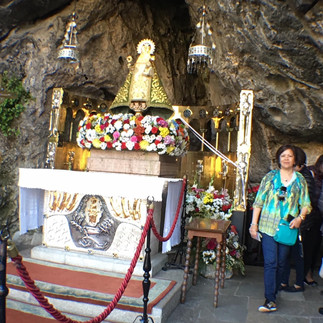









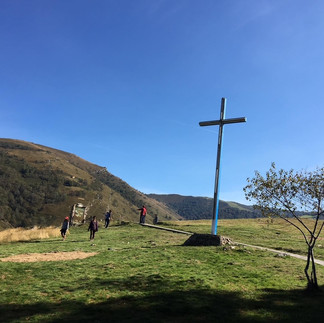



















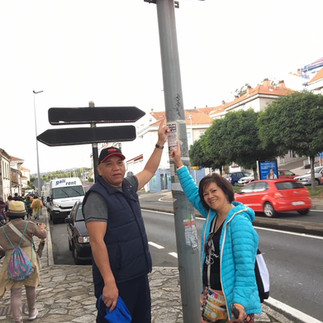





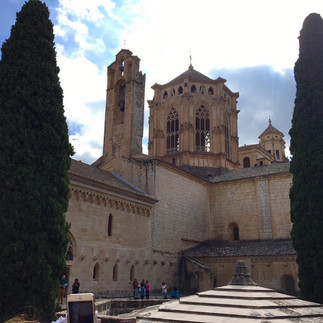





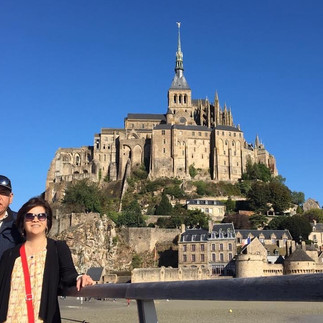
댓글